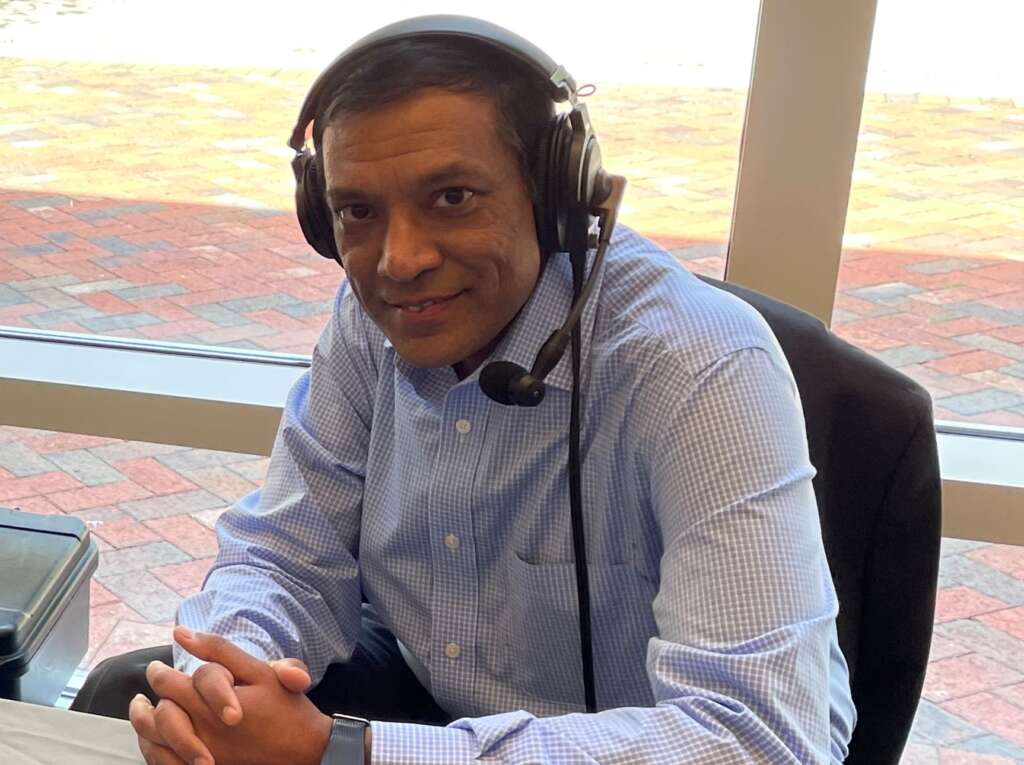

Raj Iyer has been the Army’s chief information officer November 2020 and has focused on 13 lines of effort to modernize technology and change the culture.
When Raj Iyer began his second tour of duty with the Army in November 2020, he was surprised about how much hadn’t changed since he initially left in 2012.
Now as the Army’s chief information officer tenure is coming to an end, Iyer said he’s confident a lot is different.

Iyer announced today on LinkedIn that his contract is expiring and he will begin transitioning out of the role in the coming weeks. Iyer told Federal News Network that a departure date hasn’t been finalized.
“We enabled the Army’s largest and most aggressive transformation in its history in just two years. But I can take very little credit for this success because the execution was truly at all levels in the Army,” Iyer wrote in a blog post on Jan. 5. “When we wrote the Digital Transformation Strategy, it had 13 lines of efforts each with clear outcomes and a clear alignment to Army priorities. Every one of the initiatives could be completed in two years if only we all pulled in one direction. The elements that led to success are classic themes you will find in any textbook on organization change management, nothing new, just executed flawlessly.”
David Markowitz is the Army’s deputy CIO and chief data officer. It’s unclear if he will be acting CIO when Iyer leaves.
Iyer’s impending departure marks the second senior IT executive to leave the Army’s CIO office since November. Paul Puckett, the director of the Army Enterprise Cloud Management Agency (ECMA), moved to industry in December after his contract expired in November. Puckett now is the chief technology officer for Clarity, a veteran-owned small business firm providing digital services.
John Sherman, the Defense Department’s CIO, wrote on LinkedIn in response to Iyer’s blog post that he was thankful Iyer’s service and contributions.
“You’ve made a huge impact in terms of modernizing and transforming the Department of the Army’s IT, cybersecurity and overall technology posture in areas like artificial intelligence, data and others,” Sherman wrote. “You made hard decisions and took the Army towards new and needed pathways — you showed moral courage, technical acumen, care for the force and, above all, true leadership. I’ve been honored to work with you, and we’re going to miss you. Rest assured that you’ve left big shoes to fill, and that I know I speak for all our colleagues in DoD CIO and the MILDEPs with my compliments to you, and in our commitment to ensuring we can continue supporting the Army in what you’ve started. Thanks so much, amigo. Be proud of what you’ve done here.”
Iyer was the first permanent CIO of the Army without the G6 responsibilities or title and first civilian employee to hold the title of CIO. The Army split the CIO/G6 roles in August 2020.
During his tenure, Iyer said one of his main goals was to change the Army’s culture around technology and modernization.
He did that, not just by issuing plans and goals, but through efforts such as launching a virtual desktop capability across the department, the move to the cloud, including the cArmy platform and related contracts like Cloud Account Management Optimization (CAMO) and the upcoming Enterprise Application Modernization and Migration program.
“From building the most advanced warfighting cloud in the DoD that is currently successfully supporting our operations in support of Ukraine, to our major pivot to prioritizing user experience through modern IT, we hit every target we identified in our Army unified network plan, the Army data plan and the Army cloud plan. We have established irreversible momentum at a scale where there is no going back. More importantly, we have shown that we can do this in a budget-neutral fiscal environment and never used funding as an excuse for not getting things done. When a good strategy and plan are in place, the Army executes well. It made our job so much easier,” Iyer wrote. “We also changed our tone with industry by showing them this was not the old Army they are used to doing business with. We showed that we will not be held captive by vendor monopolies or continue to retain poor-performing contractors that fail on programs. We sent a strong message to software vendors, you are either our strategic partner or we will find others who want to be. Serving the DoD must be a privilege for tech companies, not one taken for granted.”
Additionally, Iyer promoted the use of bring-your-own-device and driving the cloud services to commands outside the United States.
One of his big remaining priorities for 2023 and beyond is for the Army to consolidate and modernize its enterprise resources planning (ERP) systems. The Army currently supports five different ERPs and Iyer said last summer his goal is to reduce the 150 or so systems that feed data into the ERPs.
He did all this with a basically flat budget that was buttressed by savings through IT modernization efforts. The Army’s IT and cybersecurity budget request is $16.6 billion in fiscal 2023, which is the largest of all DoD services.
“The sense of urgency drove me to give 200% of my energy every single day, and I was surprised at how much more energized I was at the end of the day and ready to go again the next day. I told myself on day one, that if the Army was not successful in turning itself around in two years, it wouldn’t happen in three, four or five years. This was the reason why I signed a two-year contract with the Army,” Iyer wrote. “Every month, I benchmarked myself using my action plan to see where we needed to redouble efforts and where we had set a good path forward. I set for myself a personal goal that I needed to work myself out of this job in two years, and I would either be successful doing that or acknowledge defeat, but we were going to give it our very best shot.”
Copyright © 2024 Federal News Network. All rights reserved. This website is not intended for users located within the European Economic Area.
Jason Miller is executive editor of Federal News Network and directs news coverage on the people, policy and programs of the federal government.
Follow @jmillerWFED


